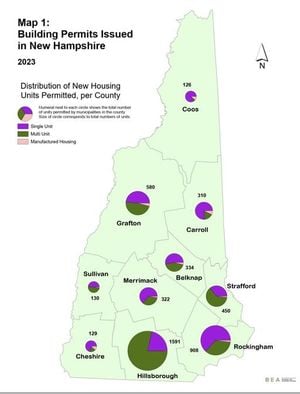Efforts to reopen significant rail routes across Scotland have gained momentum. Campaigners from the Campaign for Borders Rail (CBR) are urging the UK Government to prioritize funding for the extension of the Borders Railway to Carlisle, emphasizing its importance for regional economic growth and community connectivity. Marion Short, the chair of CBR, voiced her frustrations on the delay of nearly four years since the UK Government allocated £5 million for the feasibility study. She described the situation as 'insulting,' especially as UK Chancellor Rishi Sunak recently advocated for expansions at Heathrow Airport, ignoring the pressing need for improved transportation links in the Borders.
Short noted the positive impact the proposed railway extension could have, stating, 'We think of economic growth connected to tourism and the Borders is a beautiful, scenic area.' She highlighted how, currently, travelers tend to bypass the Borders en route to Edinburgh and Glasgow, missing out on the region's attractions. The construction of Scotland's first Center Parcs holiday village near Hawick, which would be accessible by train, reinforces the need for strategic rail connections to stimulate regional development and employment.
'Having more rail connections is instrumental to a healthier quality of life for people living here who face poor public transport links,' Short continued. She detailed how communities like Melrose, known for tourism events, would benefit from enhanced railway services.
The Borders Railway route, which originally closed under the Beeching cuts in 1969, was partially revived when the Edinburgh to Tweedbank section reopened in 2015 at the cost of £294 million. Since then, passenger numbers have surpassed expectations, bolstering hopes for the railway to extend through towns like Hawick and Newcastleton to Carlisle. 'We now don’t refer to it as the extension to the Borders Railway, we refer to it as completion of the Borders Railway,' said Short.
Despite both the UK and Scottish Governments pledging equal funding for the feasibility study, Labour's recent electoral victory led to delays as the new government reevaluates capital investment strategies, significantly straining the funding process. Transport Scotland expressed readiness to support the project led by the Scottish Borders Council (SBC), pending confirmation of the UK Government's financial commitment for project management costs.
'We're not asking for any commitment at the moment other than honour the feasibility study... the longer they leave things, the more expensive the work becomes,' expressed Short, stressing the urgency of government action. With 2025 marking ten years since the Borders Railway re-opening, Short remains hopeful for substantial progress, emphasizing, ‘Everything hinges on the release of the English part of the feasibility funding.' Meanwhile, CBR remains ready to mobilize stakeholders as it did during the first phase.
While efforts to reopen the railway gain steam, another movement is underway to reopen Edinburgh's South Suburban Line. Engineering students from Heriot-Watt University have taken the initiative, launching an online petition advocating for its integration with the city's tram network. The 12.3 km South Suburban Line, which provided passenger services until 1962, is viewed by these students as a viable and sustainable transportation option to link residential neighborhoods with the city center.
Caitlin Cummings, one of the students involved, affirmed their commitment to 'breathing new life' back to the line, stating, ‘This low-carbon and viable transport option will encourage people to use public transport instead of cars.' Their proposal also includes plans for extensions, aiming for greater connectivity across the city and effectively reducing the environmental impact of urban transport.
The group has reported significant community support, as their petition has quickly gathered nearly 1,500 signatures. Corey Boyle, another student, emphasized, 'We want our work to result in the commissioning of a new feasibility study,' noting the last study was outdated and did not account for advancements like battery-electric tram-trains, already implemented successfully elsewhere.
Edinburgh City Council’s Councillor Stephen Jenkinson echoed this sentiment, recognizing the need for 'an efficient, innovative and interconnected public transport system' to manage the growing population and impending housing crisis. He expressed anticipation for the final Strategic Business Case for the north-south tram route, which would incorporate the South Suburban Line, stating, 'We’ll continue to keep Edinburgh moving.'
Both campaigns for the Borders Railway and the South Suburban Line highlight the community-driven push for improved transportation, economic growth, and environmental responsibility within Scotland. Progress on both fronts hinges heavily on governmental support and funding. With several initiatives aimed at building interconnectivity within and beyond Edinburgh underway, 2025 may prove to be transformative for Scotland's rail networks and the communities reliant on them.



